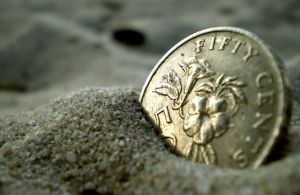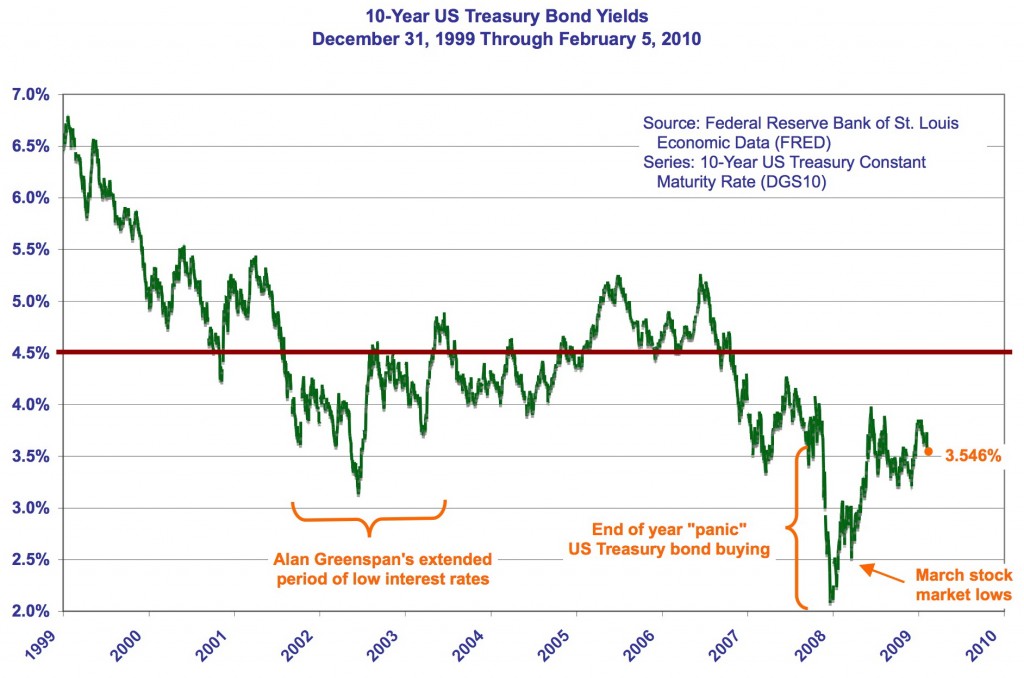Greeks Bear a Gift: Higher US Bond Prices Inside a Turmoil Package
 Media reports: Greece! It’s falling! It’s terrible! It’s bankrupt! It may collapse the Euro! It could tear the European Union asunder! Can the US withstand this coming catastrophe??
Media reports: Greece! It’s falling! It’s terrible! It’s bankrupt! It may collapse the Euro! It could tear the European Union asunder! Can the US withstand this coming catastrophe??
Meanwhile, back at The Wall Street Journal on the front page of the Money & Investing section: “Is Greek Tragedy Too Much Drama?” (February 8, 2010; page C-1) The lead paragraph reads:
Should the woes of a country with fewer people than metropolitan Los Angeles really roil the massive US financial markets?
The answer is “No.” The media is once again trying to catch your interest by over-blowing one of economic life’s speed bumps. Yes, there is serious political and personal turmoil, adversely affecting Greek’s lives. But, on the financial side, the problem is familiar: Greece has over-sized deficits and is having trouble dealing with them. You can substitute any number of countries (and states and cities) over the years and get the same scare stories. (There always seems to be some wrinkle, like the European Union’s rules hamstringing Greece, that makes the latest problem a special crisis.) This time, the reports are especially effective because of the lingering nervousness among investors.
What will happen is that the Greeks will come out of this manmade financial mess, just like those who preceded them.
There have been enough worriers to sell something and buy US Treasury bond prices, causing yields to decline. The Wall Street Journal, interestingly, put a counterpoint article directly below the one above: “Treasurys Put the Doubters in Their Place.” Second paragraph reads:
With Greece in turmoil and threatening to spread its woes through Europe, Treasurys are again benefiting from their safe-haven status.
A number of comments and quotes then follow, focusing on the “Treasury bulls” who believe the 10-year US Treasury bond yield may reach 4% max, but is destined to fall lower, increasing bond prices. As I mentioned in a previous article, we need to read through to the end of such articles to see what the reporter also heard that didn’t mesh with the story’s thrust. Here it is, towards the end, just before the positive conclusion, as usual:
The US government is borrowing relatively cheaply now, but the rough consensus is that 10-year Treasury yields will end the year around 4.5%, the highest since October 2007.
There could be upward pressure on yields even in the short term. The economy is still enjoying an inventory-led production bounce that is bolstering economic data. Easy comparisons from a year earlier could result in some scary inflation numbers [meaning bond yields could rise, and prices fall].
Looking at a graph of the 10-year US Treasury bond yields over the past decade shows the challenge to the idea that these yields can drop further in any meaningful way.
Note that we have only seen one significant period below 3-1/4%, beginning with the panic buying at year-end 2008 and extending to the March 2009 stock market lows. This means that the Treasury bulls must expect either a return of this dramatic safe-haven buying or a significant decline in inflation expectations. The facts and forecasts don’t support either at this time.
So, if you didn’t sell your bonds or bond funds before, the Greeks are giving you the opportunity to do so now.





